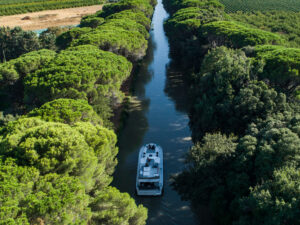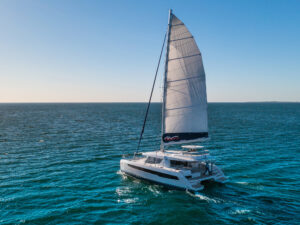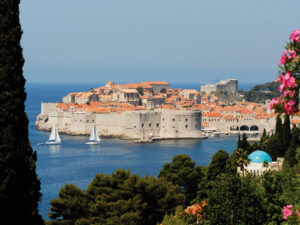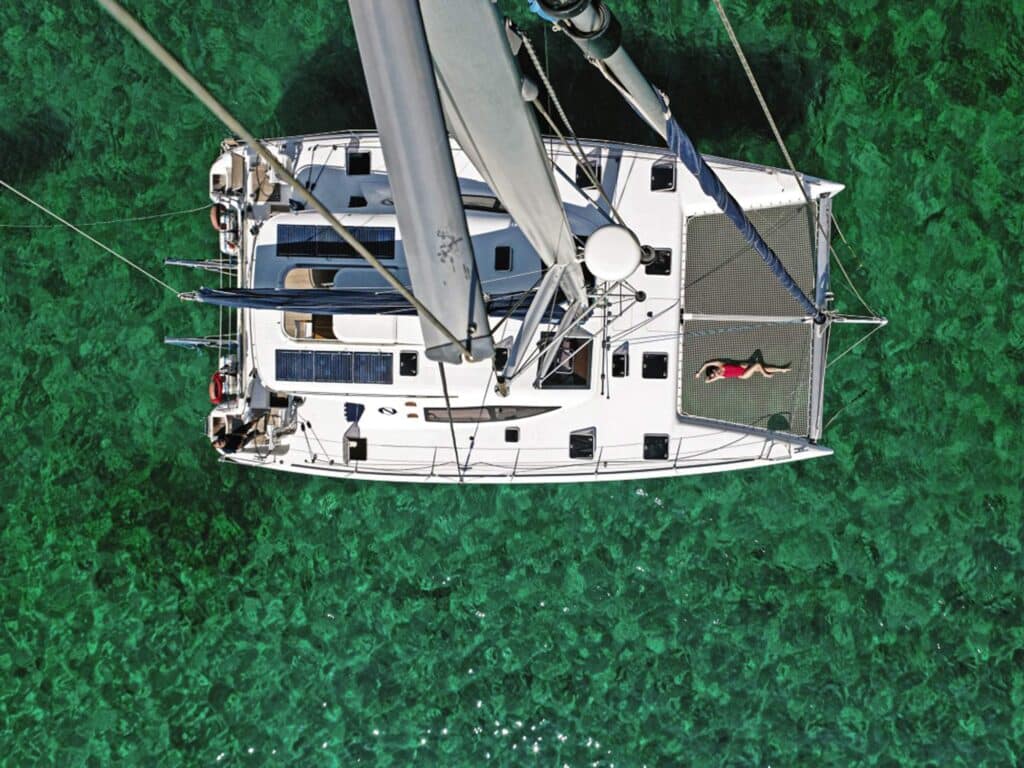
I don’t want to give away anything, but I started bareboat chartering long before multihulls populated the charter fleets. In the Bahamas and the British Virgin Islands, bareboats were often tubby monohulls, either power or sail, and usually with single engines.
Luckily, I had a head start on my first multihull charter because I’d been racing beach catamarans like Hobies, and these provided me with valuable insights into the two-hulled world.
While the catamaran has gained in popularity by leaps and bounds over the past couple of decades, the design dates back centuries. At a time when much of the “civilized” world was still gazing at the sea with fear, the Polynesians were making incredible voyages over thousands of miles of open ocean aboard large, double-hulled voyaging canoes.
If you’re planning your first multihull charter after a lifetime of single-hulled boating, be thee prepared. There are significant differences between the two breeds that go far beyond having separated staterooms where you don’t hear everyone else snoring.
Pardon the pun, but they are, indeed, a different breed of cat.
Basic Handling
Spin the wheel on a monohull, either power or sail, and things happen. Right away.
Spin the wheel on any cat, and the response time is considerably slower. You won’t have time to go below for a coffee, but if the classic saying for skippers is, “Don’t take the boat anywhere your brain didn’t get to a minute earlier,” then the multihull version is probably “several minutes earlier.”
Every change of direction, such as tacking, requires one hull to speed up and another to slow down. You’ll need to be ready for that sudden drag or you’ll stall midtack. And don’t expect to spin quickly in a marina.
Close-Quarters Handling
There’s good news and bad news here, and the traits of a multihull will make themselves clear to you in your first minutes as you maneuver away from the charter base.
Bad news: Cats don’t want to turn. Good news: Two hulls mean, in both power and sail, that you have two well-separated engines, which gives you immense leverage to spin your boat.
Where a monohull may have to back-and-fill like a car turning around on a narrow street, a cat can spin in nearly its own length. The wide stance and twin engines allow an adept multihull skipper to get in and out of tight places. Learn to use the shifters to aid your turning, especially when you have spectators to impress.
Throttle Response
Because the hulls are so slim, a catamaran is much more responsive to the throttle.
With a monohull pushing a lot of water (especially at maneuvering speeds), adding throttle doesn’t require subtlety. On a cat with little drag, however, be prepared for the boat to jump ahead. You’ll need to finesse the throttles in small increments.
Windage
Most cats (and particularly power cats) have more windage than similar monohulls. Even more important is that their often-shallow draft and absence of a traditional keel give them much less “bite” on the water when in crosswinds. Go slowly when docking in a crosswind so that a sideways-sliding cat doesn’t bite you.
Anchoring
That same windage-versus-draft means that cats like to “hunt” or “sail” around the anchor rode or mooring pendant.
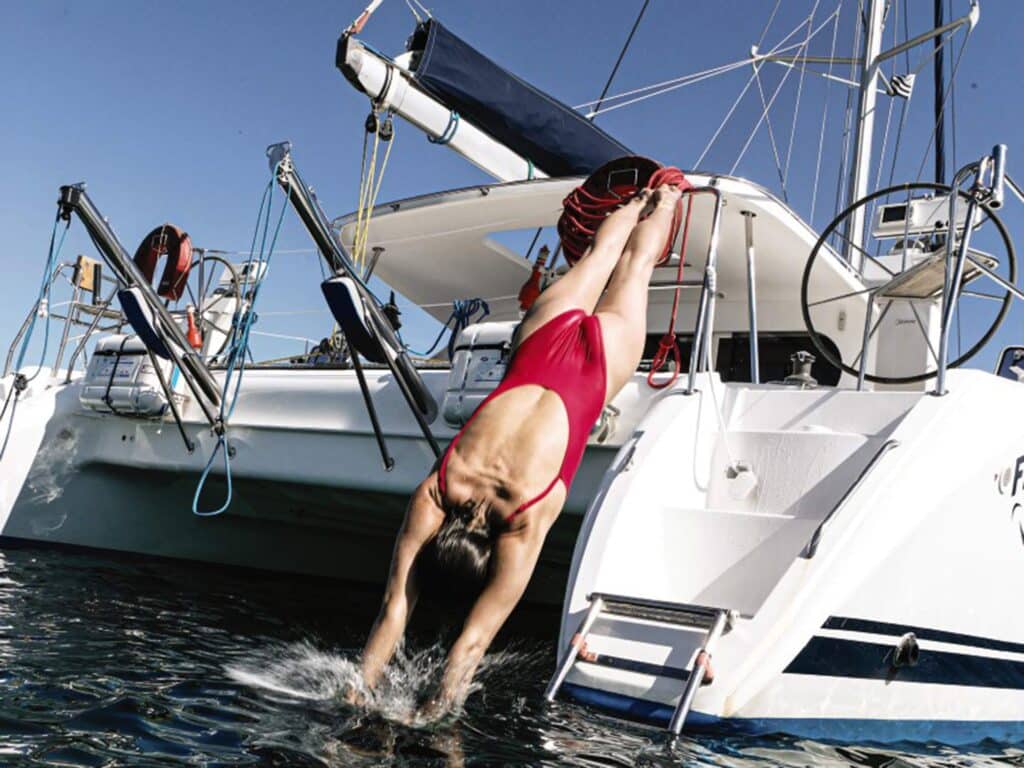
Instead of attaching a line to just one bow, use a bridle (usually provided by the charter company) from each hull to a central attachment point forward of the bows. That technique will not only stabilize the boat at anchor in a breeze, but it will also take the jolt and noise out of an anchor chain.
Steering
With a monohull, you can usually set a course and stick to it. But with a cat, quartering seas (either forward or aft quarter) can be a challenge when one hull is trying to go up a swell and the other is coming down. Not only can this create a short motion that isn’t good for Aunt Edna’s tummy, but you’ll also find yourself winding the wheel back and forth to stay on course. Adjusting your course, much like when you’re tacking upwind, can reduce the struggle and make the boat ride much more comfortably.
Running down-sea, skippers should set their speed so that one bow doesn’t “dig in” and try to take over the steering, forcing the cat into a turn. One bow stopped in a swell and the other unencumbered can require considerable steering input. Adjust your course and/or speed accordingly and you’ll be fine.
Beam seas, especially when waves and troughs equal the distance between the hulls, can make for an unpleasant snap roll. But, like the other situations, a slight course change will steady the ride.
Beam
A sail or power catamaran is a lot beamier than a monohull, which is why the cats offer so much room. It doesn’t take a degree in naval architecture to figure out that a 42-foot catamaran with a beam of 22 feet is going to have more available space than a 42-foot monohull with a 13-foot beam.
But you’ll have to pick and choose your dockage. Don’t be surprised if a marina puts you on the end tie, because the dockmaster can probably get two boats into that same-size slip you were eyeing. Call ahead via VHF radio if you aren’t sure a marina can handle a cat, but rest assured that marinas in bareboat-charter areas are familiar with your needs.
The good news when it comes to beam is that the same wideness gives a cat great stability and a steadiness at anchor that can rival solid ground.
The many catamarans that populate bareboat fleets around the world offer significant advantages, not the least of which is sheer space. There are large salons, airy galleys, well-separated staterooms, and wide foredecks for young and old guests to enjoy.
Don’t be put off before your first charter on a catamaran: This is one breed of cat that will have you purring with delight.
Award-winning marine journalist Chris Caswell has been bareboat chartering for more than five decades. He is also the editor and publisher of chartersavvy.com.

